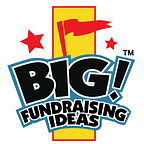High School Fundraising Ideas | What About Green Products?
Why more high schools are choosing green fundraisers over traditional strong selling alternatives
Wouldn’t it be great if schools could have their cake and eat it too? Just think if all fundraiser products that were good for the environment also made groups lots of money. One could easily conclude that these 2 goals wouldn’t have to be mutually exclusive.
After all, how can we not be motivated to support groups that are attempting to sell products that are good for us from a nutritional standpoint, as well as the environment? Further, shouldn’t we be obligated to buy these items just because they offer these benefits?
This makes even more sense because more and more groups are looking for unique high school fundraising ideas in a crowded marketplace. There are so many me-too products out there, and let’s face it, competition is fierce. Groups are trying to stand out from the masses so they can offer unique and viable options. This makes them more appealing to buyers.
On the other hand, there’s a reason why are so many groups are selling the me-too products. Is it because buyers respond to them? Absolutely. Yet, familiarity often breeds complacency. People don’t really like change unless they have a compelling reason to look elsewhere. And as long as they feel that something is working, they’re probably going to stay put.
Fundraisers that claim to be environmentally friendly are definitely a bonus; however that doesn’t mean that this added benefit translates into more sales. In fact, historically we’ve observed that they’ve failed to yield the results of more traditional fundraisers such as candy bars, popcorn and cookie dough.
Yet, many groups are attempting to create a niche for themselves by promoting the importance of environmental awareness and health consciousness. So why not attempt to raise awareness and money at the same time? Many groups are thus stepping outside the box and offering these types of programs.
Still others are being forced by school districts, district self-regulation, or even pressure from the public to offer alternatives to popular selling items like candy and plastic mugs. Some areas even place different rules on food fundraisers based on the nutritional value of the product.
These schools can promote their sale to their students as long as the product has proven nutritional value. This is the result of pressure being placed on the school district. Therefore, many schools are being forced to either comply and sell only nutritious food products, or sell something else.
Carving Out a Product Niche
High school groups appear to be welcoming green fundraisers more than other groups are. We’ve found that these groups are more likely to choose a brochure that focuses on one theme as opposed to a potpourri of items. This is in contrast to elementary schools which tend to favor the large variety shoppers with lots of wrapping paper, novelty gifts and candy.
In addition, high school fundraising ideas that are trendier and unique, and perhaps even easier to sell, tend to be favored by these groups. Students in this age group have the opportunity to offer something distinctive that doesn’t compete against other groups.
Selling flower bulbs is one example of an environmentally friendly green program that has caught on with smaller groups, and are thus embraced by some communities. Having curb appeal is a big hot button with property owners and nothing provides that quite like colorful flowers and plants. This is one of the things that makes this type of fundraiser extremely practical.
Buyer Tendencies by Age
When deciding on a fundraiser, it’s also important to consider the population breakdown by age for your community. So which age group is more likely to buy environmentally conscious products? According to Katie Young’s article published in globalwebindex, millennials are definitely leading the way.
In fact, 61% of this age group said they’d pay more to purchase eco-friendly or sustainable products. This compares to 55% of Gen Xer’s and only 46% of baby boomers. However, once the disposable income of Generation Z (16–21 age group) starts to flourish, they may even surpass the millennials.
Other Fundraising Alternatives
Still other smaller groups like sports teams and cheerleader squads have also embraced more non-food alternatives, like flowers.
It appears that the smaller high school groups are moving towards green fundraisers faster that other groups are. Perhaps it’s because many of these Gen Zer’s are making the fundraising decisions. Still younger students rely on older adults, like principals and PTA moms, to choose what products to sell. However, it remains to be seen if they choosing these programs out of choice, or necessity.
But when it comes to high school fundraising, what’s most important is properly targeting your audience. You must have receptive buyers if you hope to make money. The tide definitely appears to be shifting, however.
Originally published at https://bigfundraisingideas.com.
